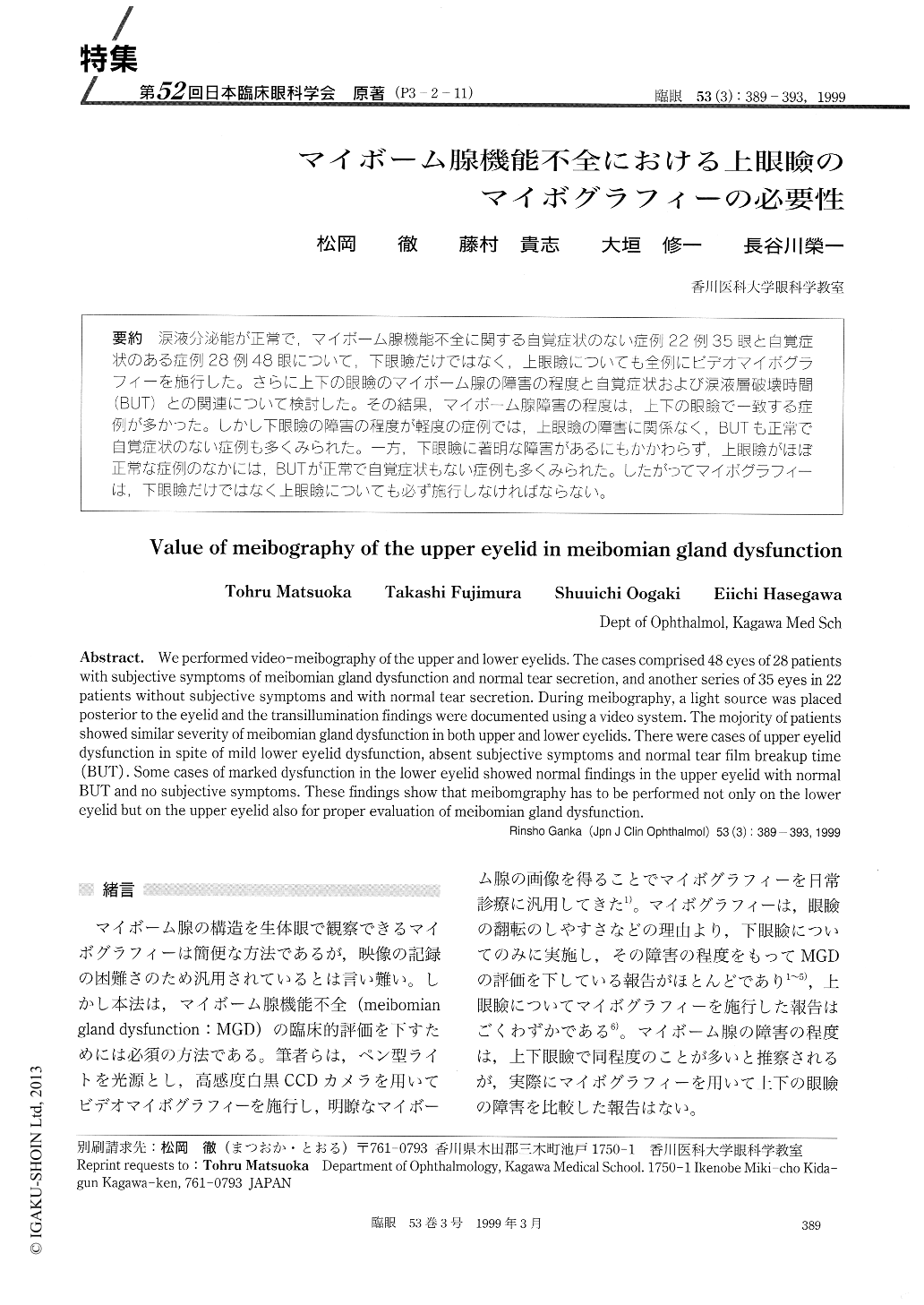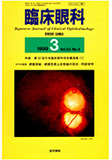Japanese
English
- 有料閲覧
- Abstract 文献概要
- 1ページ目 Look Inside
(P3-2-11) 涙液分泌能が正常で,マイボーム腺機能不全に関する自覚症状のない症例22例35眼と自覚症状のある症例28例48眼について,下眼瞼だけではなく,上眼瞼についても全例にビデオマイボグラフィーを施行した。さらに上下の眼瞼のマイボーム腺の障害の程度と自覚症状および涙液層破壊時間(BUT)との関連について検討した。その結果,マイボーム腺障害の程度は,上下の眼瞼で一致する症例が多かった。しかし下眼瞼の障害の程度が軽度の症例では,上眼瞼の障害に関係なく,BUTも正常で自覚症状のない症例も多くみられた。一方,下眼瞼に著明な障害があるにもかかわらず,上眼瞼がほぼ正常な症例のなかには,BUTが正常で自覚症状もない症例も多くみられた。したがってマイボグラフィーは,下眼瞼だけではなく上眼瞼についても必ず施行しなければならない。
We performed video-meibography of the upper and lower eyelids. The cases comprised 48 eyes of 28 patients with subjective symptoms of meibomian gland dysfunction and normal tear secretion, and another series of 35 eyes in 22 patients without subjective symptoms and with normal tear secretion. During meibography, a light source was placed posterior to the eyelid and the transillumination findings were documented using a video system. The mojority of patients showed similar severity of meibomian gland dysfunction in both upper and lower eyelids. There were cases of upper eyelid dysfunction in spite of mild lower eyelid dysfunction, absent subjective symptoms and normal tear film breakup time (BUT). Some cases of marked dysfunction in the lower eyelid showed normal findings in the upper eyelid with normal BUT and no subjective symptoms. These findings show that meibomgraphy has to be performed not only on the lower eyelid but on the upper eyelid also for proper evaluation of meibomian gland dysfunction.

Copyright © 1999, Igaku-Shoin Ltd. All rights reserved.


